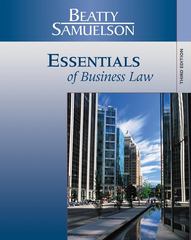please help tutors with short answers to simplify the notes
7. (a) The Balance of Payments is made up of the Current Account and the Capital Account. Explain each of the underlined terms. Include details of the main components of each account in your explanations. (b) Suppose the euro (C) increases in value relative to the American dollar ($) and sterling (E). Outline the likely effects this increase would have on any THREE components of the Balance of Payments, which you listed in answering (a) above. [ At least one component should be from the Capital Account. ] (c) The enlargement of the European Union (EU) continues with the addition of Bulgaria and Romania in January 2007. There are now 27 member states. Discuss FOUR economic consequences for the Irish economy, of the EU enlargement process. B. (a) Outline, using appropriate figures, how the Irish economy performed in the past twelve months in each of the following areas: (i) employment; (ii) interest rates; (iii) price inflation; (iv) government taxation. (b) (i) State and explain FOUR economic aims of the Irish government. (ii) Discuss TWO examples where economic policies introduced to achieve one economic aim, may make it more difficult to achieve one of the other aims. (c) "The National Debt / GDP ratio has fallen from over 90% during the first half of the 1990's to an estimated 25.1 % at the end of 2006'. (National Treasury Management Agency) (1 Briefly explain each of the underlined terms. (ii) Outline the economic benefits of this changed situation for the Irish economy.5. (a) Explain the following economic terms, using appropriate examples in each case: i) Government Current Budget; (ii) Government Capital Budget; (iii) Revenue Buoyancy; (iv) Regressive Taxation. (b) State and explain how a government budget could be affected by each of the following developments: (i) a rise in interest rates in the economy; (ii) a fall in the rate of stamp duty on property purchased; (iii) the introduction of subsidised child care for all families within the state. (c) You are appointed Economic Advisor to the Minister for Finance. Outline the economic arguments you would identify for the Minister in favour of lowering Irish income taxation rates. 6. (a) The main components of National Income are: Consumption, Investment, Government Expenditure, Exports, Imports. (i) Show the equation which links all of these components with the level of National Income in the economy. (ii) Explain what determines/influences the size of each of these components of National Income. (b) The table below shows the level of National Income, Consumption, Investment, Exports and Imports at the end of Year 1 and Year 2. (For the purpose of this question you may ignore the government sector.) Year National Income |Consumption Investment Exports Imports E10,000 E8,600 1,000 E1,200 E800 E1 1,200 69,500 (1,300 E1,100 Calculate the following, showing all your workings: i) The level of Exports in Year 2; (ii) The Marginal Propensity to Import; (iii) The Marginal Propensity to Save; (iv) The size of the Multiplier. Explain the economic meaning of this multiplier figure. (25 marks) (c) Less developed countries (LDCs) are primarily concerned with achieving economic development while developed countries are concerned with achieving economic growth. (i) Distinguish between the two underlined terms. (ii) Outline THREE characteristics which indicate that a country is a LDC








